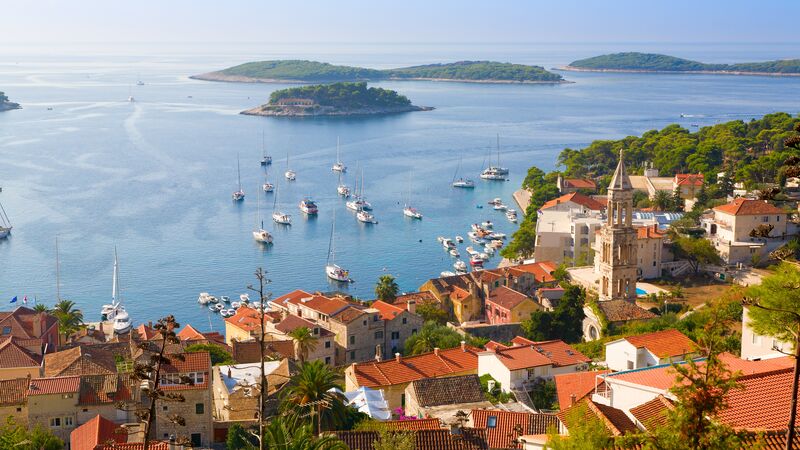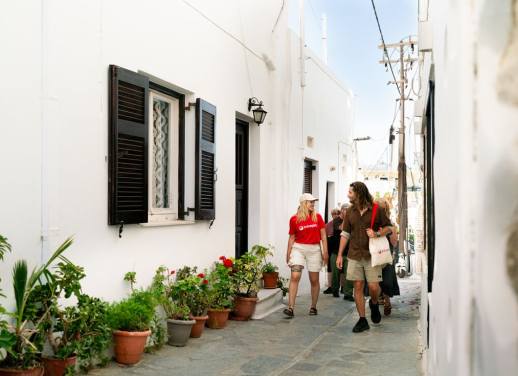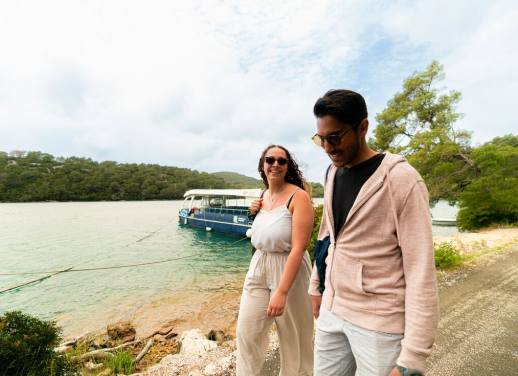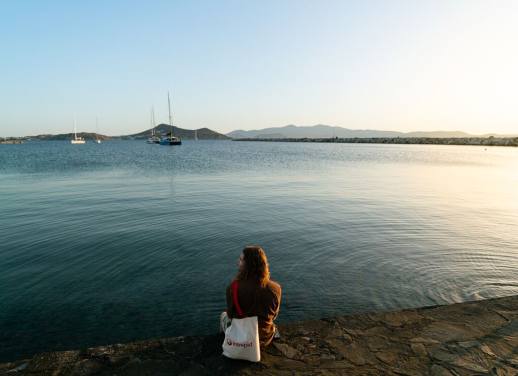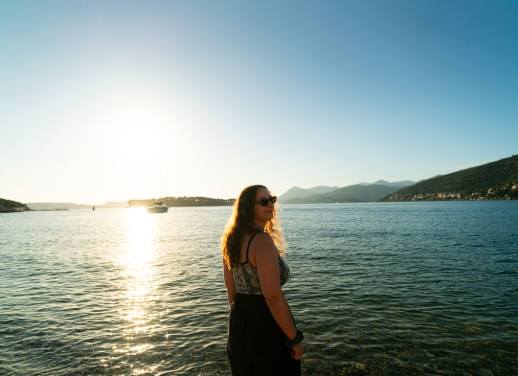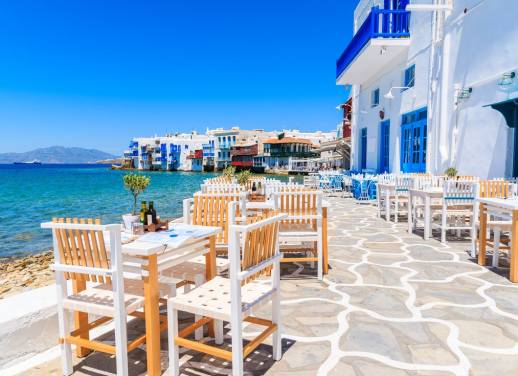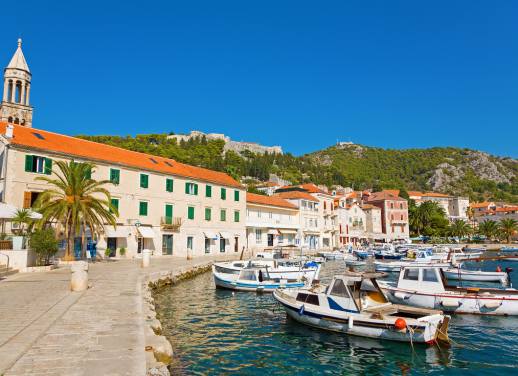Got visions of the Med dancing in your head?
Can you see yourself winding through white-washed alleys to the soundtrack of ABBA? Or maybe you’re like me and you watch waaaay too much TV, in which case it’s time to press pause and plan a real-life trip.
With modern-day CGI and special effects, few destinations sparkle as much in real life as they do on the big screen, but Greece and Croatia are two exceptions.
But which country do you pick when both have sleepy islands, ancient history and a mouthwatering cuisine?
In this handy guide, we’ll compare the highlights to help you choose the right destination for your voyage off the couch.
Film and TV
The Greek Islands are known for luring in dreamers and romantics. From the coming-of-age movie The Sisterhood of the Traveling Pants to the 80s’ Summer Lovers, plenty of iconic films are set and filmed in Greece. But we can’t talk about film and TV without mentioning Mamma Mia, a whirlwind romance movie set to the timeless 70s soundtrack.
The modern musical takes place on a fictional Greek island called Kalokairi. It features Meryl Streep as the free-spirited Donna, who belts ABBA anthems while trying to dodge three ex-lovers. If you want to live out your own Dancing Queen fantasy, you can check out the film’s actual set locations: the islands of Skiathos and Skopelos in the Sporades archipelago.
Other films that transport you to this Aegean paradise include cult classic Zorba the Greek (filmed in Crete), Bond blockbuster For Your Eyes Only (filmed in Corfu) or cinematic masterpiece The Big Blue (filmed on Amorgos and Ios).
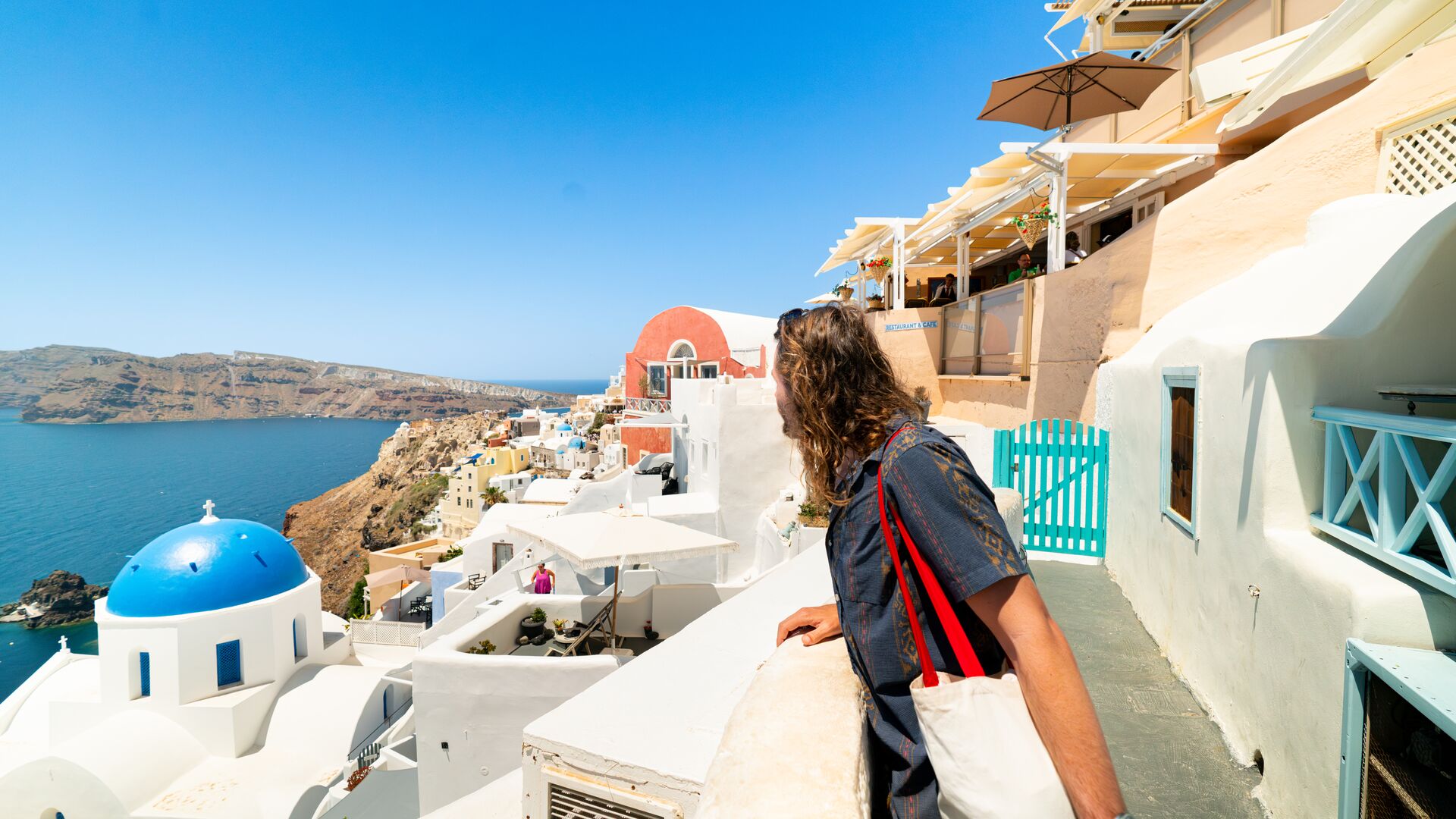
Croatia’s medieval cities and picturesque islands shot to stardom as the backdrop for a different type of fantasy: HBO’s record-breaking Game of Thrones. Based on the novels by George R. R. Martin, the fictional series depicts noble families fighting for control of the ‘Iron Throne’ and features impressive shots of castles and churches that appear frozen in time – no special effects needed.
Dubrovnik – a medieval walled city on the Dalmatian Coast with distinctive red roof tiles – stands in for one of the most recognisable locations for show fans: King’s Landing, the capital city of the Seven Kingdoms. You can sign up for a Game of Thrones tour, but even if you’ve never seen the series, the city’s UNESCO-listed Old Town is well worth exploring.
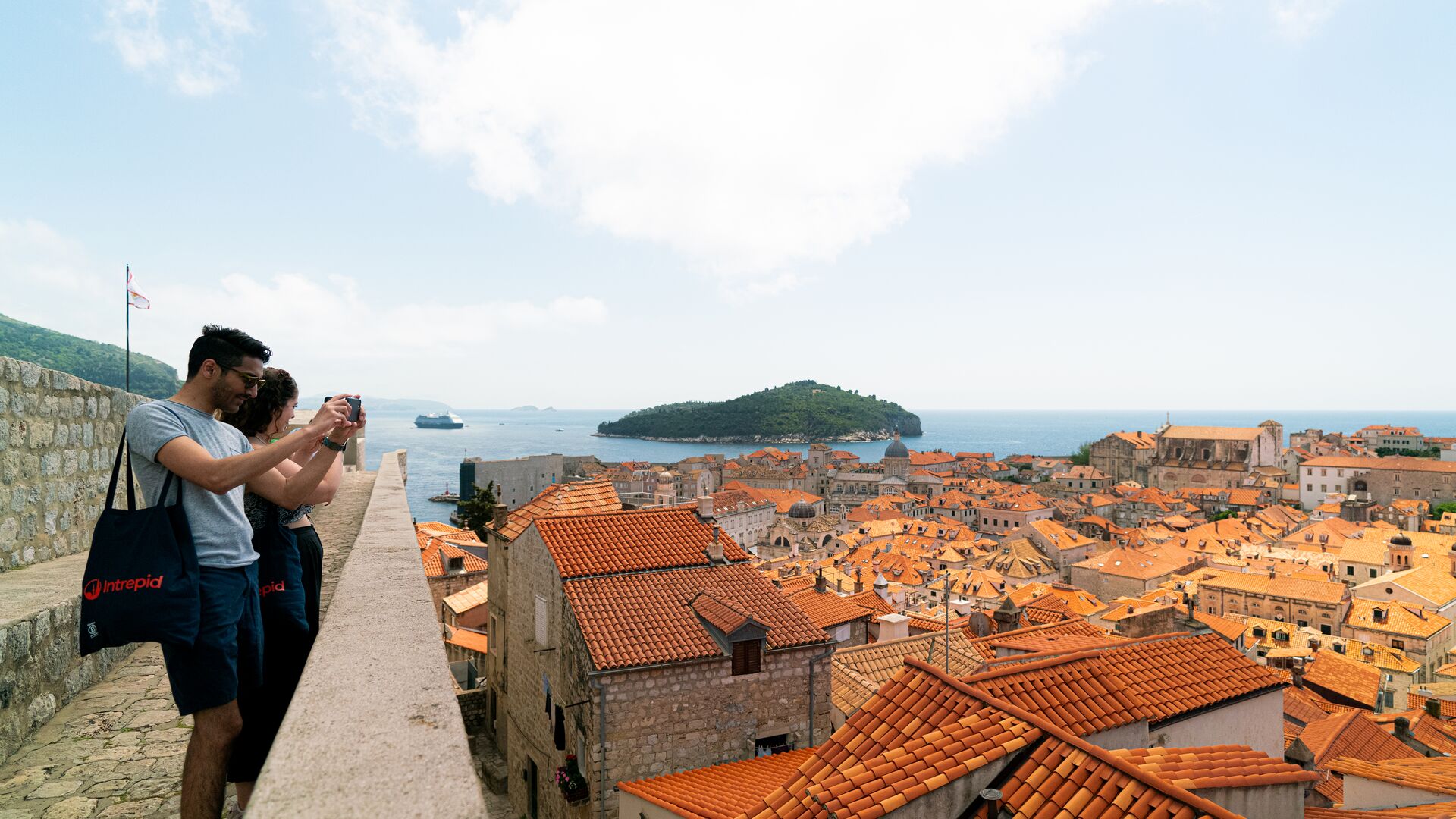
Split, Croatia’s second largest city, houses the medieval Kliss Fortress – the shooting location for the fictional town of Meereen, the residence of beloved Game of Thrones protagonist Daenerys Targaryen. Diocletian’s Palace, also a UNESCO site, is featured in some of Daenerys’ critical scenes, with the palace cellar standing in for her throne room and where she trained her precious dragons.
Whether you’re a Donna or a Daenerys, riding dragons or hiding from ex-husbands, Greece and Croatia are both fantastic destinations if you want to visit your favourite silver screen sites in real life.
Islands
Greece and Croatia have no shortage of island escapes. Seaside villages, crystal-clear water and abundant wine and seafood – you’ll find it all here.
The Greek islands are grouped into six unique chains: the Argo-Saronic Islands, the North Aegean Islands, the Ionian Islands, the Dodecanese, the Sporades, and (arguably the most famous) the Cyclades – home to hotspots like Santorini, Mykonos, Naxos and Delos. They attract everyone from sunset-swooning honeymooners to history buffs, boutique shoppers and solitude seekers.
Only some islands have airports, but all are accessible by boat. You can use the extensive ferry network to get around, but our favourite (and headache-free) way is on a small group sailing trip. With a local skipper at the helm, you’ll explore lesser-known spots along with more popular islands with more of a vibe.
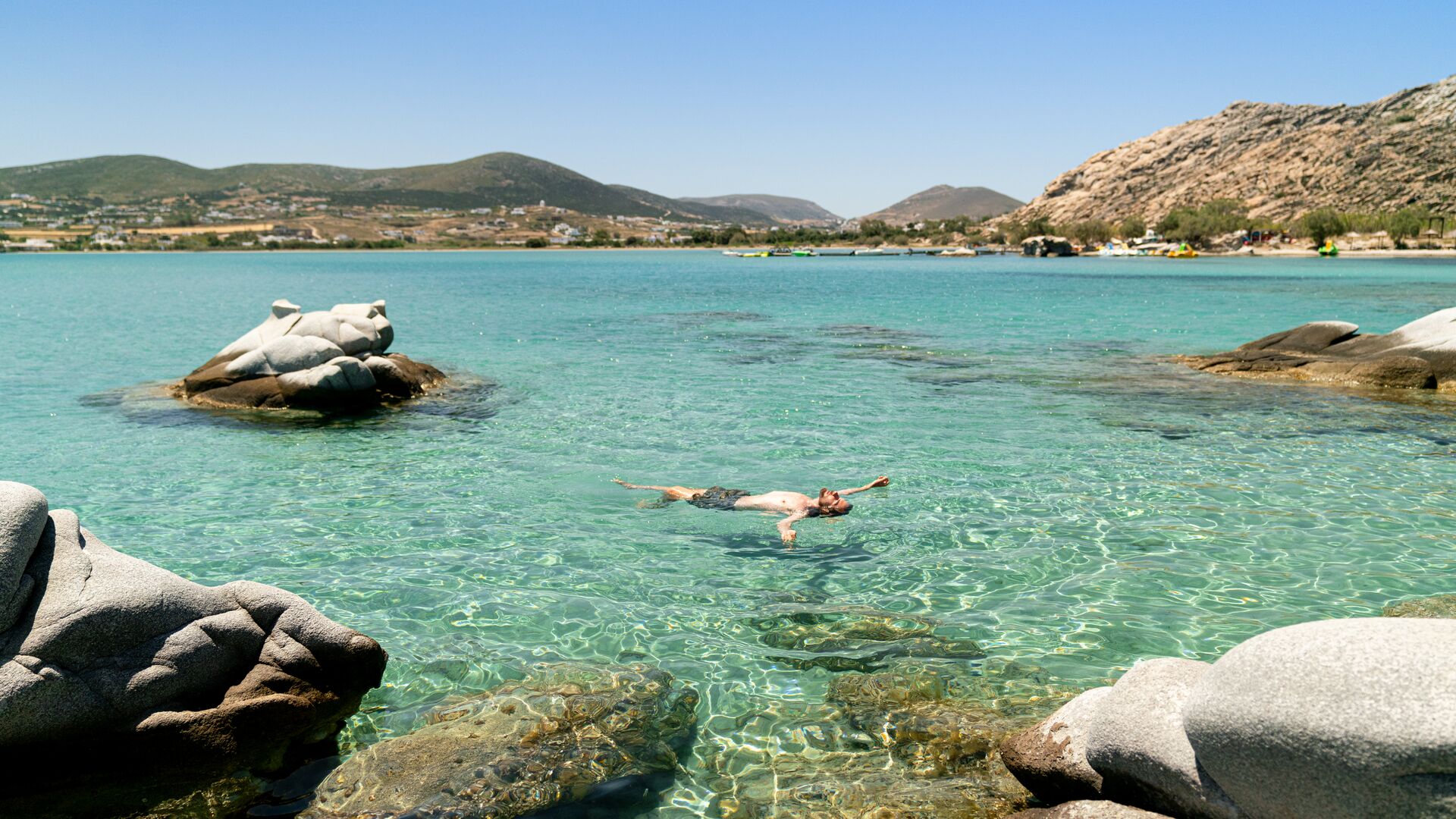
Croatia’s Adriatic Islands hug the mainland and are closer together, so if you love the idea of island-hopping but still want to be close to shore, a Croatia cruise could be right up your alley.
A leisurely cruise along the sparkling Dalmatian Coast includes stops at Hvar (the sunniest island in the Adriatic), pine-tree-covered Korcula and lake-laden Mljet – all while stopping to swim in scenic grottos. Since the distance between islands is short, itineraries can be fairly customisable. Feel like exploring Roman relics one day but blissing out on a white sand beach the next? Done and done.
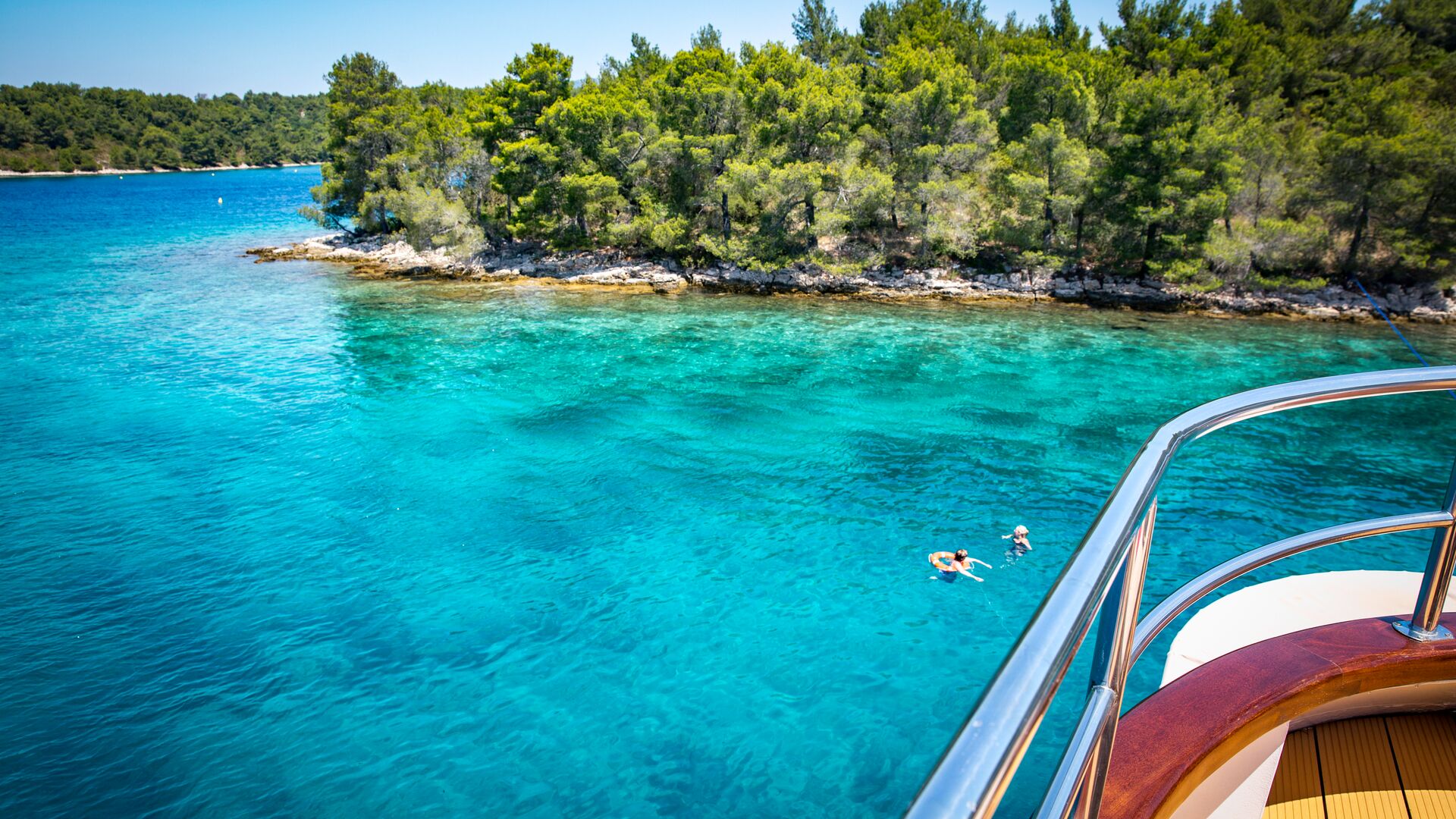
Landscapes
Often overlooked in favour of the islands, mainland Greece has its fair share of natural beauty – especially if you’re hunting for historic sites. In ancient Greece, steep cliffs and rocky slopes were often chosen as the sites for temples, churches and sky-high monasteries so that meditation could happen closer to the heavens.
Meteora is arguably one of the most impressive. These 24 monasteries sit on karst pinnacles that reach up to 300 metres. Six are still occupied and open to visitors, but the real wow factor is the view. The roads between the monasteries have plenty of lookout spots to enjoy a bird’s eye view of the surrounding forests and terracotta rooftops. If you time it right, you might also see what could be one of the prettiest sunsets of your life.
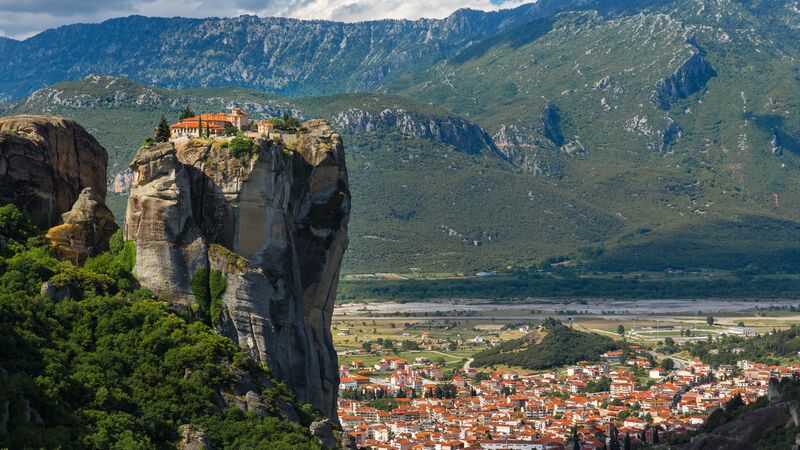
Croatia might not have hanging monasteries, but it does have incredible waterfalls – especially in the UNESCO-listed Plitvice Lakes National Park. The park has a network of 16 trails, boardwalks and jewel-toned lakes that cascade into 90 waterfalls. If you search ‘epic waterfalls’ on Google or Instagram, there’s a good chance at least one shot of Plitvice will come up.
Krka National Park is just as impressive, with mighty falls that spill into emerald pools. While swimming is now restricted in Plitvice and Krka to protect the ecosystems, both parks are about an hour’s drive inland from the coastal cities of Zadar and Split – so there’s no need to choose between fresh and seawater swims.
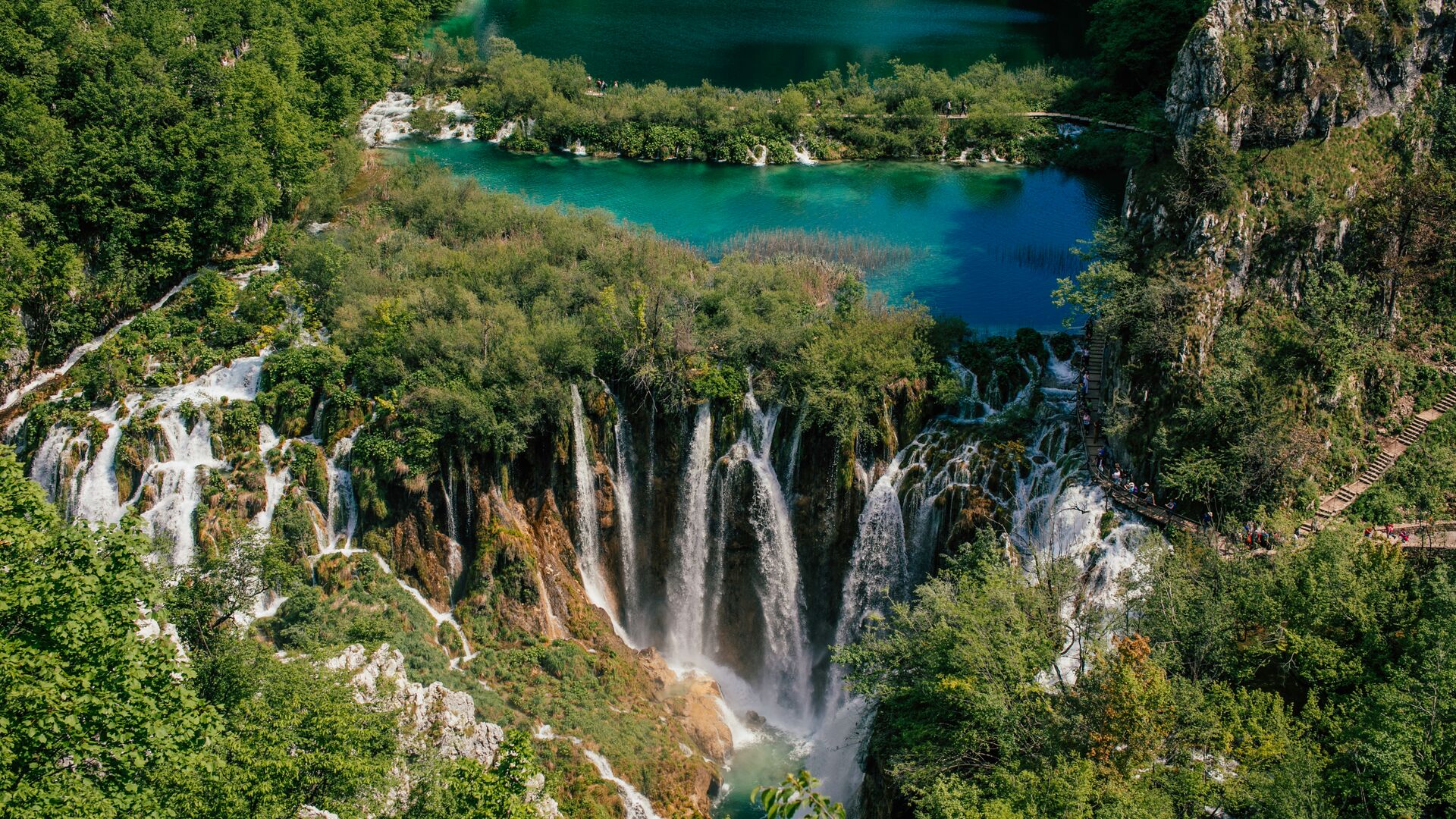
Cuisine
One area where these two countries are truly neck and neck? The cuisine.
Greece is known for many cooking staples like feta cheese, olive oil and honey. And if eating the catch of the day at a seaside taverna is your idea of heaven, this is the place for you. There are also plenty of opportunities to pop into family-run olive groves and wineries to taste subtle flavour changes in different regions.
Greek dishes often focus on local produce and fresh flavours, so both vegetarians and meat lovers will be happy. We love a Greek meze feast (an array of small plates similar to tapas) featuring classics like dolmades (stuffed vine leaves), tangy dips, olives and fried saganaki cheese. Be sure to try moussaka (layers of eggplant, spiced mince and creamy bechamel) and chargrilled octopus. And don’t forget to wash it down with a cold glass of ouzo, the national drink.
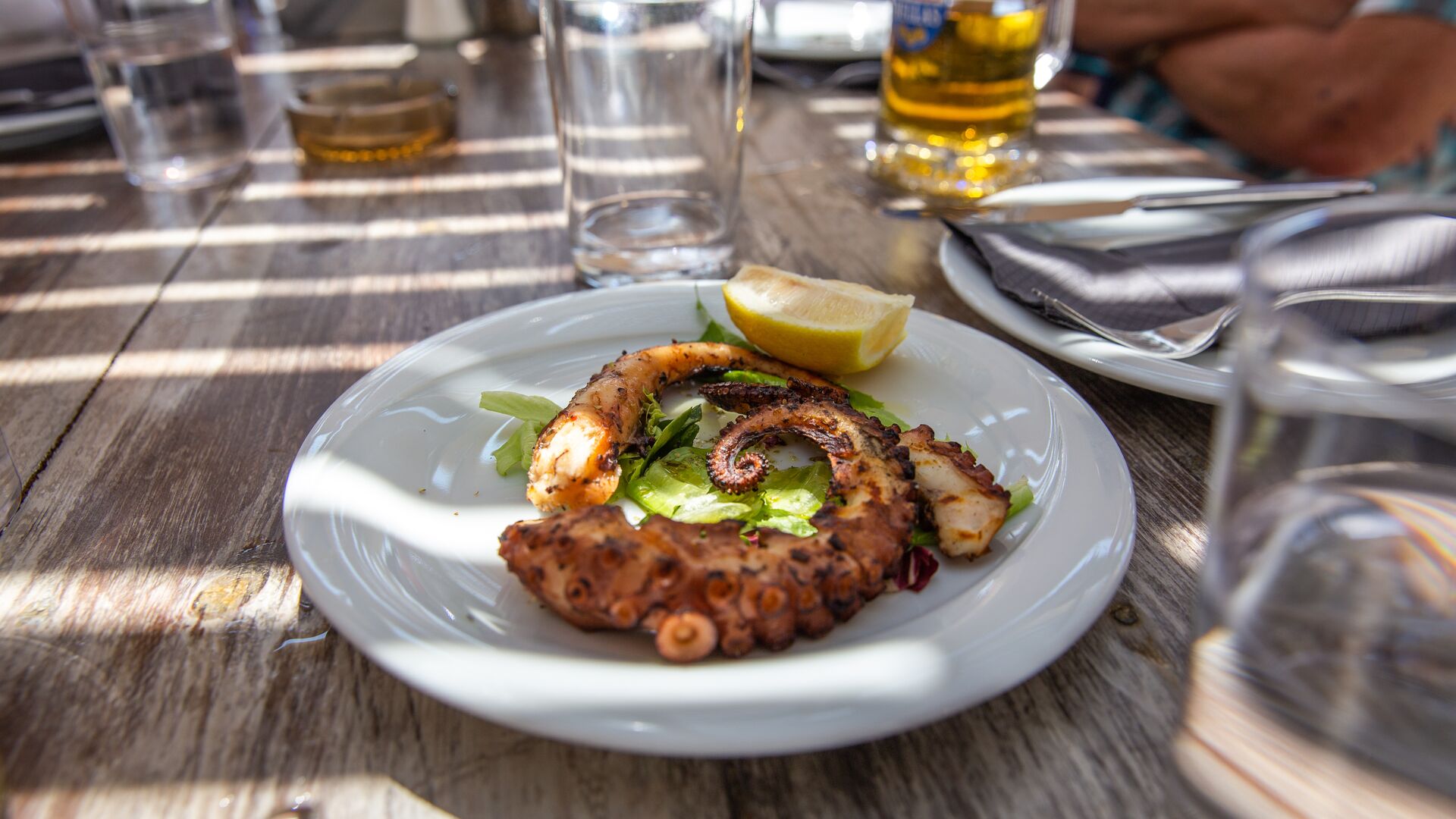
With a range of microclimates, Croatian food is the perfect example of terroir, or food that tastes like the land. The island of Pag is known for Paški sir (Pag cheese), made from the milk of local sheep that graze on herbs and salty grasses, giving the cheese a distinct flavour.
Like Greece, Croatia has plenty of locally grown or made produce, with heaps of places to see (and taste) where your food comes from. Think: touring fish markets, and digging into grilled sardines and black risotto on the Dalmatian coast, and sampling silky olive oils in Brac.

History
When it comes to history, few places can compete with ancient Greece. It is one of the cradles of civilisation, after all! So many things in life today – from philosophy to democracy, modern medicine to astronomy – all came from Greece.
This overachieving little country holds an incredible collection of remnants from the ancient world, and its impressive ruins make it a top destination for history and mythology buffs alike.
Mainland Greece is home to ancient monuments like the Temple of Apollo, the Sanctuary of Delphi, the Acropolis in Athens and Ancient Olympia. Athens alone has over 70 museums. The islands are steeped in history too. In Crete, walk through what’s rumored to be Europe’s oldest city at Knossos, or visit the uninhabited and UNESCO-listed island of Delos – the mythological birthplace of Apollo and Artemis – to see one of the most extensive excavations in the Med.
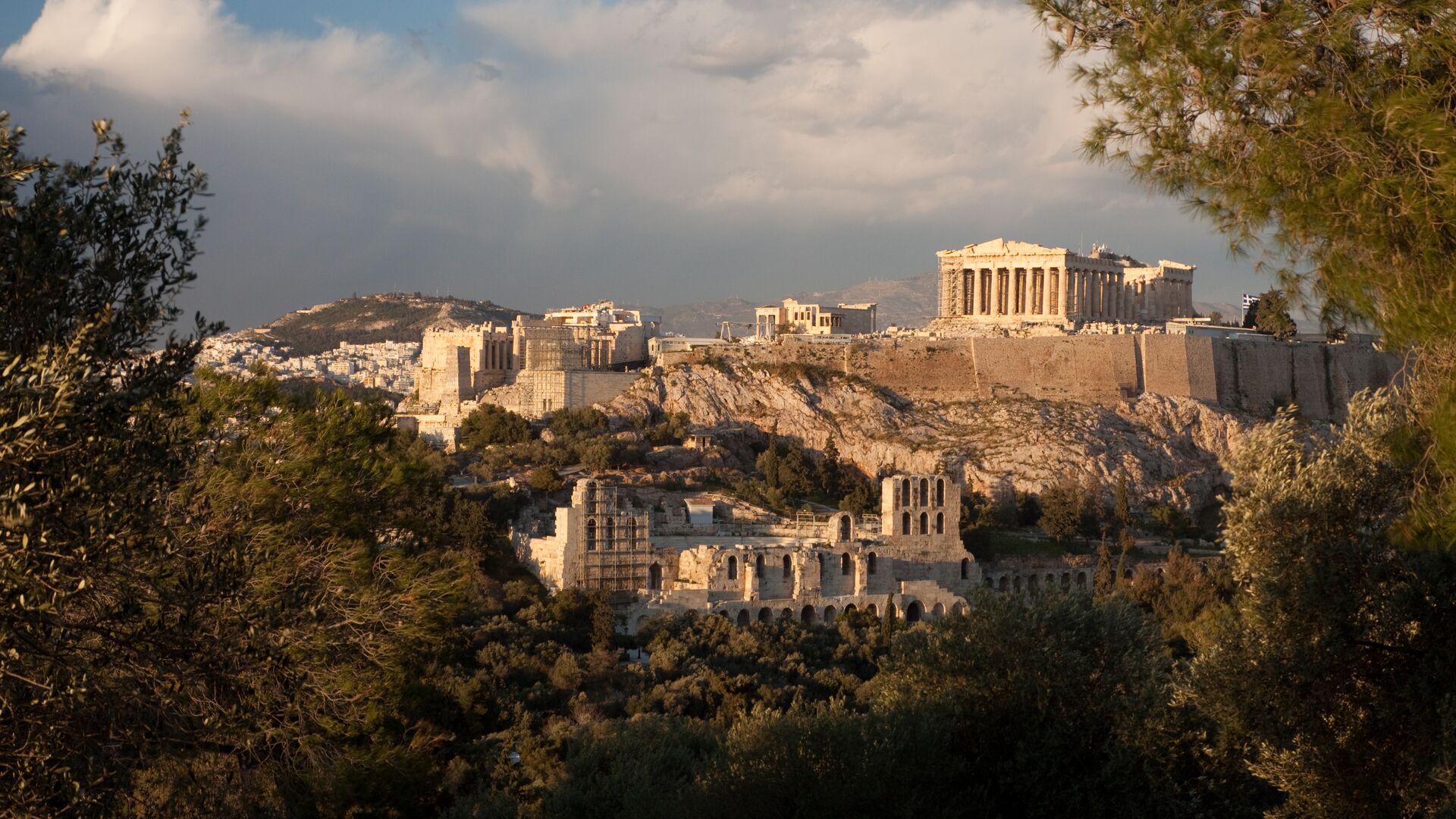
Croatia clocks a respectable 10 World Heritage sites, so history enthusiasts certainly shouldn’t discount this Balkan country. If getting lost in medieval streets set against a turquoise backdrop is how you picture spending your time, Dubrovnik is the obvious choice. But there’s also Korcula and Motovun – both just as interesting but less crowded.
Or step back even further to the Roman era at the iconic Diocletian Palace in Split or Pula where you’ll find a remarkably well-preserved Roman amphitheatre.
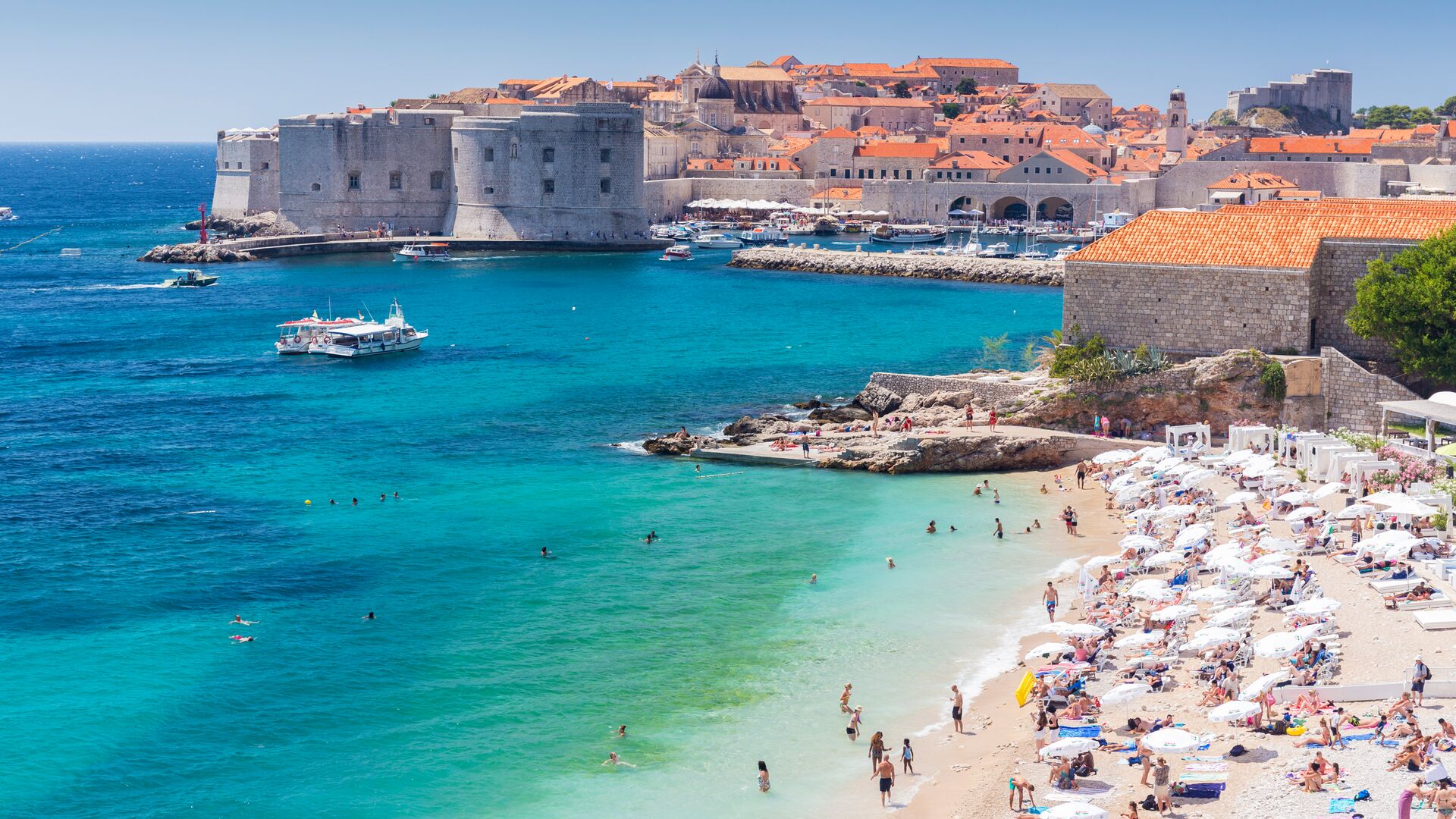
Verdict
Don’t blame us for taking the easy route, but we really can’t choose a favourite when it comes to these two Mediterranean gems. Stunning coastlines, incredible fresh food and ancient cobblestone towns have us daydreaming about both.
Why not combine the two on a trip from Dubrovnik to Santorini? Or check out Intrepid’s Greece and Croatia trips.

